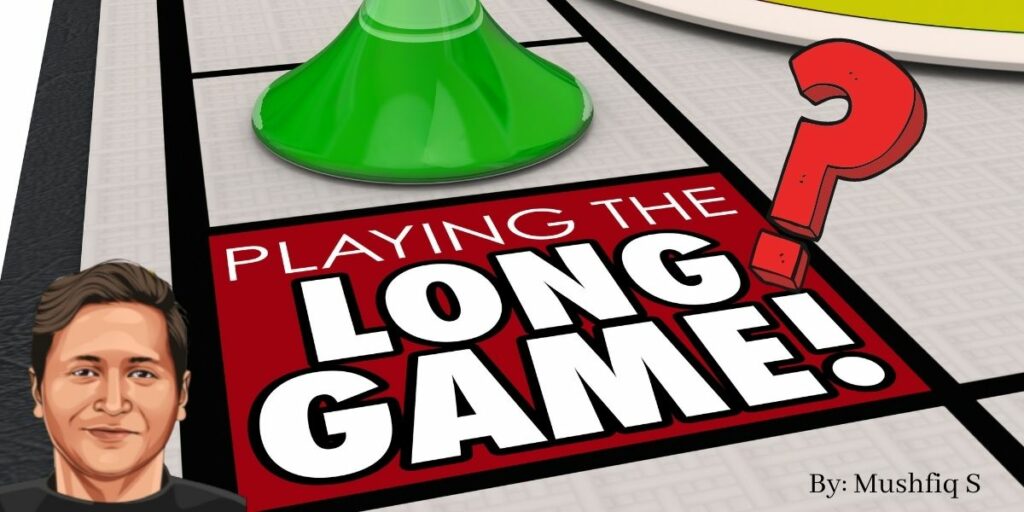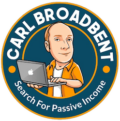
This article has been written and submitted by my good friend and well-respected affiliate marketer Mushfiq. His experience from buying and selling over (175+) websites is simply unbeatable. Enjoy the article!
Building websites from scratch for the big sale, or buying, improving, and flipping websites for profit are both strategies I’m a big fan of.
There are also many others who build niche websites to hold them for long-term passive income. This is another great strategy, and it’s definitely one that is worth looking into.
Many of us who are in the niche site space long enough will often do both at some point. Many of the steps are the same whether building a site for a passive income portfolio or preparing for a big one-time payday from a flip.
In this write-up, I will go into depth of what are the different strategies for long-term passive income.
Build vs Buy Niche Sites: The Ultimate Decision
The smart move is to start with one site to learn the ropes.
On my first site, I not only needed to know about the topic I was blogging about, but also learn SEO and good monetization practices.
I understood these skills would be important to determine my success on the sites that I did the majority of the work on.
They would also help so I would be able to more effectively locate good writers or outreach specialists and train them to do things in a way that was proven to work.
Building Sites from Scratch
I strongly believe that one needs to build a site from scratch before getting into buying sites.
These skills include:
- Learning to write good content that search engines love
- Running successful link outreach
- Optimizing on-page SEO factors
- Increasing revenue through better monetization
Building sites from scratch allows me to maintain full control over the process. Since I’m the one doing the work, I know it’s being done right.
This also is a budget-friendly option. Beyond a domain name, good hosting, and an SSL there aren’t additional expenses for most of the process. At least until scaling up with paid work or outreach makes sense.

This is going to be the method that has the lowest initial costs in most cases but can also be the most time intensive.
Aged Domains
A good aged domain is like a “cheat code” that lets me build a site from scratch while skipping the Google Sandbox and seeing results almost right away.
This is the way I prefer to build a new site from scratch because it means some of the SEO work and brand building Google wants to see is already done.
A good aged domain can be expensive for a true beginner, but it is always worth considering when the budget is there for it.
Check out this guide to building niche sites on aged domains.
Pros
- Most budget friendly option
- Full control over the process
- Forces the learning of crucial skills
- Can tackle any niche I’m excited about – I don’t have to wait for a good site in that niche to come up for sale
Cons
- Heavily time and work intensive
- Requires an aged domain to avoid the Google sandbox and/or see early profits
- Requires much more SEO work if not using an aged domain
Buying & Improving an Existing Site
Also known as “flipping sites,” buying a profitable site that I know has all kinds of untapped potential is one of my favorite models for making money online.
This method requires more money up front. It also means knowing what you’re doing to consistently make profits.
Becoming really good at flipping websites requires a lot of skill. Especially in SEO, spotting obvious problems or missed opportunities, identifying sites where monetization is under-optimized, and of course due diligence.
Pros
- Starting out with a money making site
- Some easy changes can result in big immediate results
- Less work than starting from scratch
Cons
- Requires more starting capital
- Requires more growth/successes to make the profit worth my time
- Need to spend a lot of time looking for good deals
Buy DFY Sites
The idea of buying done for you (DFY) niche sites is one every entrepreneur needs to look at and consider. Especially for true beginners.
This is where an agency of experienced writers, marketers, and SEO specialists take payment to create a niche website for the client. They handle the legwork, and hopefully the client ends up with a profitable site.
Or at least one that has potential to be.
There’s definitely a place for these types of sites in the market, though beyond the true beginner I don’t believe it makes sense for most people.
Pros
- Mostly hands off other than a few emails
- True beginners can see how a niche site is built (good learning experience)
Cons
- High starting costs
- Very little or no control over keyword selection
- Trusting the agency for quality content
Starting a Portfolio of Niche Sites
Building a single site for passive income is a bad strategy.
While beginners should absolutely focus on a single website starting out, if the goal is passive income, a portfolio of sites needs to be the long-term goal.
Passive income that depends on a single site is always going to be in danger. If that site tanks, the income dries up and the party’s over.
The shortlist strategy for building a portfolio basically goes:
- Build (or buy) a profitable website
- Use good content, SEO, and optimization to maximize traffic
- Learn to maximize ad and affiliate income
- Find other sources of income to boost earnings
- Put the first site on maintenance mode, start or buy a second
- Learn to scale and repeat
There’s plenty to learn in each of those bullet points, but that is the basic outline for snowballing from one profitable site to a portfolio of many sites that offers both passive income and more security.
Properly Planning for Long-Term Success
When flipping a single website it can be advantageous to focus hard on building up the one site. For a portfolio long-term success is going to be much more obtainable with good strategic planning.
This means looking at:
- When to work on a site and when to outsource
- When to keep working on building a current site and when to begin a new one
- Building or buying sites in different niches
- Having many different income sources
Each of these is an important point not only for making more money but for also making sure that the passive income built remains secure. Or at least as secure as possible.
Importance of Different Niches
When I’m looking for long-term passive income, that means those monthly payments need to keep coming regardless of changes to Google, Amazon Associates, or other affiliate programs.
The idea of passive income is freedom because you have that monetary safety net.
Amazon changing a category from 8% to 1% can really hammer a niche. If that category was home improvement and my sites were kitchen, garage, basement, and general home improvement then that’s a serious problem.
That one change can sink the earnings of all four sites.
Having sites across multiple different niches can help prevent this from happening.
Importance of Different Income Sources
The more different sources of income a portfolio of sites has, the better. While display ads and Amazon affiliate links are par for the course, there are many other options that should be pursued.
Clickbank, other affiliate marketplaces, direct affiliate deals with companies are just some good options for getting more monetization.
Video ads work for some niches, as do paid listings. Depending on the niche, maybe creating an information product, membership area, or software can help.
Getting the most out of visiting traffic will help determine how fast I hit the passive income numbers I want.
Someone relying on one source of income is completely beholden to that company for payment. On the other hand if a portfolio has 30 different sources of income, losing one, even a big one, shouldn’t be crippling.
FAQ
Why not double down on one niche?
There are a few reasons this isn’t the best option. One of the major benefits of having a portfolio of niche sites is safety. So if one site’s earnings get crushed, I’m still making plenty from the others.
If two sites are in the exact same niche, they’re competing with one another for traffic. While being 1-2 for every term in a niche can sound great, it’s not as profitable as many might imagine. There’s a ceiling on what the second site can earn.
For sites in related topics (like a camping site, fishing site, and hiking site, for someone into the outdoors, for example) this can be a good strategy to start. Especially in fields that person is passionate and knowledgeable about.
However, if Amazon crushes outdoor commission rates and a major outdoor affiliate program shuts down, that can hit the income of all those sites.
On the other hand, if I have six sites, each one in a different niche, one site’s earnings getting hammered won’t be an emergency.
Diversification gives a larger degree of safety.
Should I just focus on Amazon sites or display ad sites?
I recommend monetizing with both. Most sites should have a mix of keywords that focus on informational topics or buying based keywords. Even many information-based topics will have a good space for recommending a product.
Monetizing with both raises the site’s earning potential as well as simply offering more safety because revenue is diversified. Matt Diggity’s case study shows how you can place display ads and affiliate products on same articles without a massive decline in revenue.
Being too focused on just one or the other not only makes a site more beholden to that source of income, but also robs the website builder of the skills and knowledge that comes from the monetization method that wasn’t chosen.
Why don’t I just flip the niche sites?
In my case many times I eventually do just that! Building the site to be as profitable as possible is good practice whether keeping the site as part of a passive income portfolio or preparing it for sale.
The big one time payment from selling a site can be a big boost. Often I find that to be the right move based on my plans and how I can reinvest the money. However, if the goal is a passive monthly income then maintaining a portfolio of earning sites is a must.
Wrap Up
The same skills needed for improving the value of a single website for flipping are needed when building a portfolio of money-making sites.
While the idea of getting paid for work already done is great and can be a reality, it is an enormous amount of work upfront.
With a smart plan, focus on getting the most out of limited work energy, and building an intelligent diversified portfolio of niche sites it is a dream that can be an online reality.

Bio: Mushfiq has been buying, growing, and selling website assets since 2008. His first exit was in 2010. Since then, he has done 175 website flips with multiple 6-figure exits. His free newsletter, The Website Flip, covers case studies on his portfolio of sites, website flipping guides, and exclusive websites for sale.
